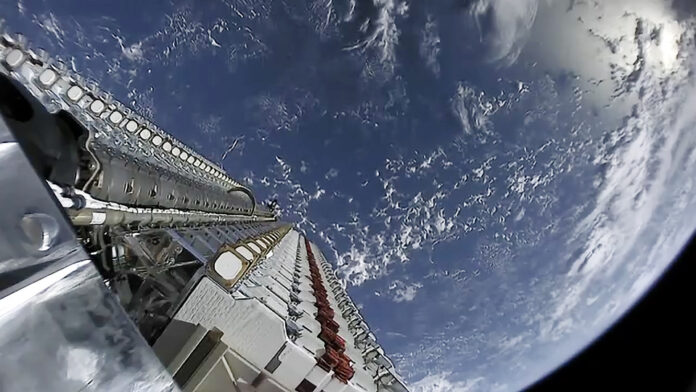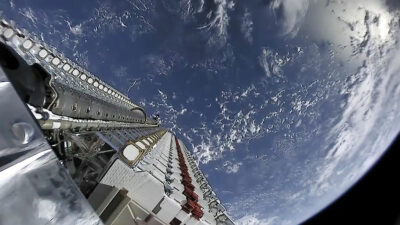
BY HARRY WEEKES

In early March of this year, just a little after 5:00 a.m., I looked to the skies to see a satellite cruising toward the Big Dipper. As I watched, another emerged in its trail. And then another. By the time five were visible, I started freaking out.
I was at the tail end of The Three Body Problem, Cixin Liu’s epic trilogy, in part about the invasion of Earth by Trisolaran aliens, and in the midst of a lifetime enamored with science fiction. When the five satellites became six, and seven, and eight, eventually becoming more than 30, I was, quite literally, convinced that the alien fleet had arrived, with all of its implications, the most fundamental of which was summed up by, “We are not alone!”
When I found out later that these were StarLink satellites, Elon Musk’s very much Earth-borne fleet, I was bummed.
Then, this fall rolled around. Vivid in the early morning sky is Venus—a piercing, blue-white “star” hanging over the eastern hills. And guess what? In early September, an announcement came—phosphine gas has been detected in the cloud decks of Venus. Now, if the term “cloud decks” isn’t cool enough, appreciating both the structure of Venus, and also the potential meaning of this announcement, brings a different feeling to my morning stargazing.
For starters, Venus is shrouded in cloud layers, tens of miles thick. This blanket means the Venusian surface is nearly 900 degrees Fahrenheit. It also means that about 30 miles up, the cloud layers are “temperate”—about the same temperatures as we have on Earth. And, it turns out, early evidence is that all abiotic routes of manufacture for phosphine have been ruled out. Which leaves the most likely culprit bacteria. That’s right—bacteria might be producing phosphine gas on Venus. That’s right, there might be life on other planets, and one in our solar system.
Summed up another way, “We are not alone!”
But you realize pretty quickly, even knowing the considerable hemming and hawing, and “what ifs” and “probably nots” associated with any kind of scientific finding, that people are not content with bacteria being the life form we discover. This, despite the fact that microbial cells outnumber our own, in our own bodies, by as much as a factor of 10; depending on which estimate you follow, there might be as many as 100 trillion of these cells inside of you.
But bacterial byproducts potentially showing up in the cloud decks of Venus? Blah. Show me some tentacled, multi-headed, phaser-wielding humanoids that speak with their minds. When we find life on other planets, we want our socks blown off, a communication link established, and longstanding human issues solved (as opposed to a total intergalactic war).
We minimize bacteria in space because we minimize them here on Earth, despite the fact that they were fundamental to how life started on Earth, and also to how life survives on Earth now.
Last week, Elon’s necklace of satellites surged across the sky, again. They disappeared into the distance even as my gaze turned to Venus, burning above a rising fingernail moon. I stared as intently as I could, and just couldn’t help but wonder, “Are we really not alone?”
I know there will be a lot we need to do to confirm these early reports. Even so, a powerful new possibility now accompanies my morning walks.
Harry Weekes is the founder and head of school at The Sage School in Hailey. This is his 48th year in the Wood River Valley, where he lives with Hilary and two of their three baby adults—Penelope and Simon. The other member of the flock, Georgia, is currently fledging at Davidson College in North Carolina.


